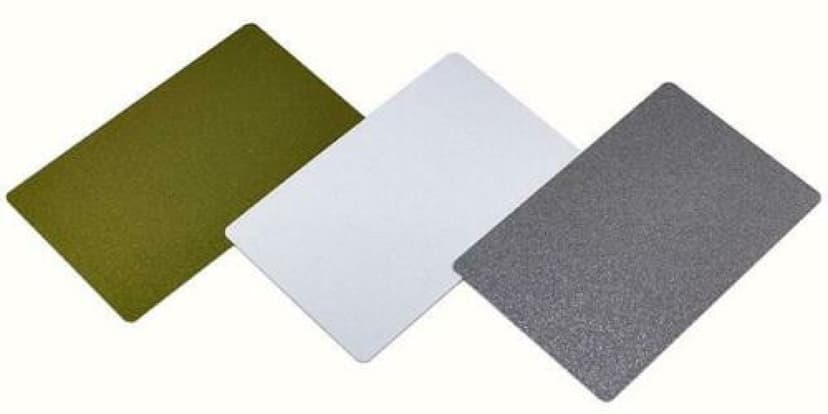Business cards have been a staple in the professional world for decades. They serve as an introduction, a way to exchange contact information, and a tangible reminder of a connection made at a networking event. However, as technology continues to advance, the traditional paper business card is facing limitations that hinder its effectiveness in a digital age.
The drawbacks of traditional business cards
While traditional business cards have served us well, they come with their fair share of drawbacks. Firstly, they are easily lost or misplaced. How many times have you found a stack of business cards tucked away in a drawer, forgotten and unused? Additionally, the information on paper business cards can become outdated quickly, requiring frequent reprints. This not only incurs costs but also contributes to waste in a world that is increasingly conscious of sustainability.
Introducing contactless business cards
In light of these challenges, a new solution has emerged: contactless business cards. These innovative cards leverage technology to provide a seamless and efficient way of exchanging contact information. Rather than relying on physical cards, contactless business cards utilise digital platforms to share information instantly and effortlessly.
How do contactless business cards work?
Contactless business cards work by utilising Near Field Communication (NFC) or Quick Response (QR) codes. NFC allows for the wireless transfer of data between devices when they are in close proximity. QR codes, on the other hand, can be scanned by smartphones or other devices to quickly access the relevant contact information.
When using contactless business cards, all you need to do is tap your card against the recipient's smartphone or scan the QR code provided. The recipient's device will automatically detect the card and prompt them to save the contact information. This eliminates the need for physical cards and ensures that the information is stored accurately and conveniently.
Benefits of contactless business cards
Contactless business cards offer numerous benefits compared to their traditional counterparts. Firstly, they are eco-friendly. By eliminating the need for paper, contactless business cards contribute to a more sustainable business environment. They also reduce the costs associated with printing and reprinting traditional cards, making them a cost-effective choice in the long run.
Additionally, contactless business cards provide a more efficient way of exchanging information. With a simple tap or scan, contact details are instantly shared and stored. This eliminates the need for manual data entry and reduces the risk of errors or missed connections. Furthermore, contactless business cards allow for easy updates. Instead of reprinting an entire batch of cards when information changes, the digital nature of contactless cards allows for quick and seamless updates.
Examples of contactless business card technology
There are several examples of contactless business card technology available in the market today. One popular option is digital business card apps, which allow users to create and customise their contact information digitally. These apps generate unique QR codes that can be shared with others to quickly exchange information. Some apps even offer additional features such as analytics to track interactions and engagement with the shared contact information.
Another example is NFC-enabled business cards. These cards contain an embedded chip that communicates with NFC-enabled devices. By simply tapping the card against a smartphone or other compatible device, the contact information is instantly transferred. NFC-enabled business cards often offer customisation options, allowing users to design a card that reflects their personal brand.
Designing your contactless business card
When designing your contactless business card, it's important to consider your target audience and the image you want to portray. While the physical design may not be as important as with traditional cards, the digital representation of your contact information should still be visually appealing and professional.
Ensure that your contact information is clear and legible, and include any relevant details such as job title, company name, and website. If using a QR code, make sure it is properly sized and positioned for easy scanning. Consider incorporating your brand colours or logo to maintain consistency and enhance brand recognition.
Wing has an easy and affordable service, read more here - https://www.wingcard.io/blog/wing-the-contactless-business-card Create your own at - https://www.wingcard.io/
Implementing contactless business cards in your networking strategy
Now that you understand the benefits and technology behind contactless business cards, it's time to incorporate them into your networking strategy. Start by downloading a digital business card app or researching NFC-enabled card providers. Explore the features and options available to find a solution that best fits your needs.
Next, update your contact information and create your digital card. Take the time to customise it with your personal brand elements and ensure that all details are accurate and up to date. Once your card is ready, start sharing it with your contacts at networking events, meetings, or even through email signatures.
The future of contactless networking
Contactless business cards are just the beginning of a larger trend towards contactless networking. As technology continues to evolve, we can expect more innovative solutions to emerge. Virtual networking events, augmented reality business card exchanges, and even holographic representations of contact information may become the norm in the future.
By embracing contactless networking, professionals can streamline their processes, reduce waste, and stay ahead of the curve in an increasingly digital world. The future of networking is contactless, and it's time to embrace the possibilities it offers.
Conclusion
As we bid farewell to traditional paper business cards, contactless business cards emerge as a solution that addresses the limitations of their predecessors. These modern alternatives allow for seamless and efficient exchange of contact information, while also promoting sustainability and cost-effectiveness.
By leveraging technology such as NFC and QR codes, contactless business cards provide a more efficient and eco-friendly way of networking. The benefits are numerous, from easy updates to instant information sharing. Examples of contactless business card technology abound, ranging from digital business card apps to NFC-enabled cards.
Designing your contactless business card should reflect your personal brand and be visually appealing and professional. Implementing contactless business cards in your networking strategy can be as simple as downloading an app or researching NFC-enabled card providers.
The future of contactless networking holds even more possibilities, and as professionals, it's important to embrace these advancements to stay ahead. Contactless business cards are just the beginning, and the future promises more innovative solutions that will shape the way we network and connect. So, let's tap into the potential of contactless networking and pave the way for a post-paper world.



